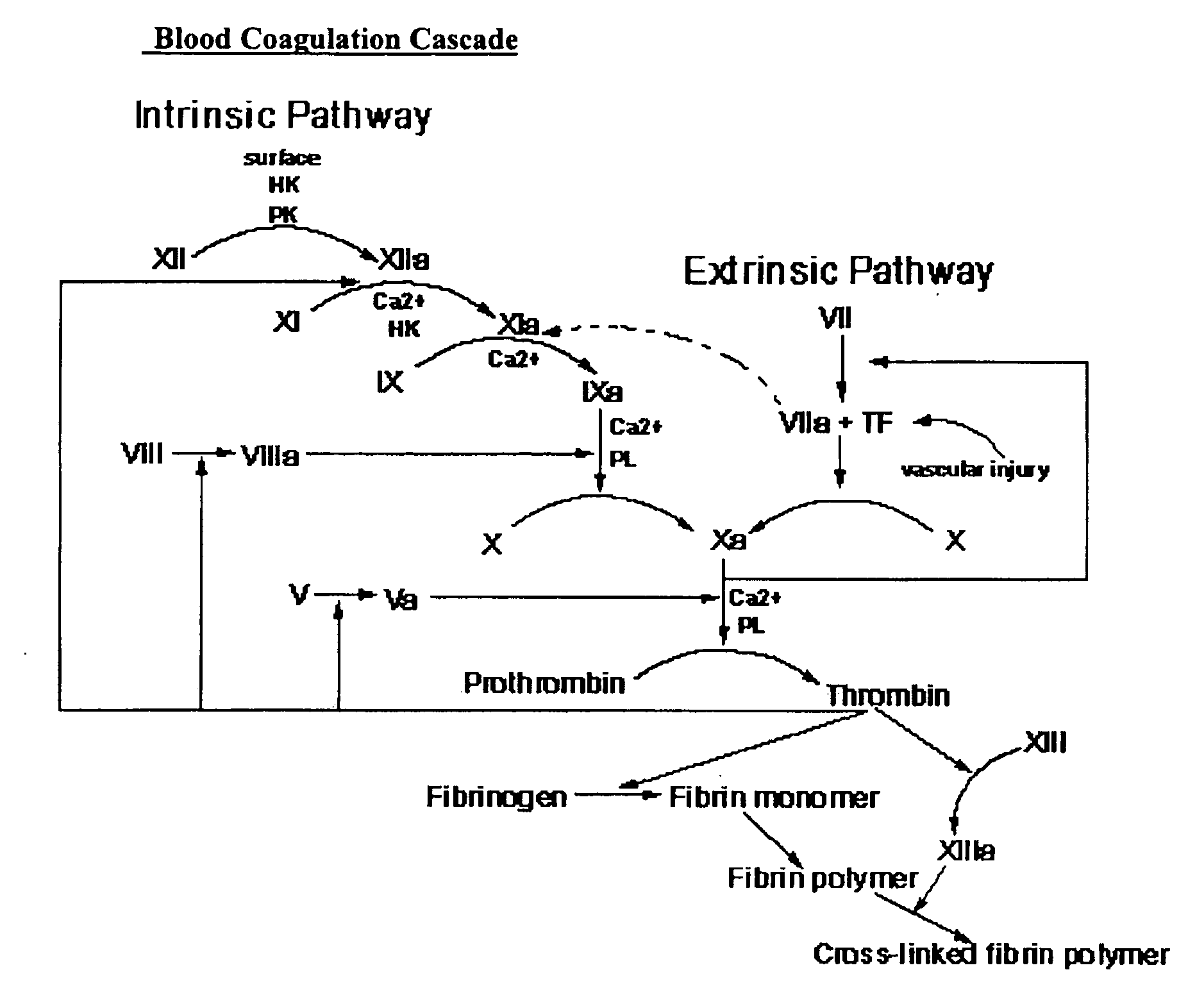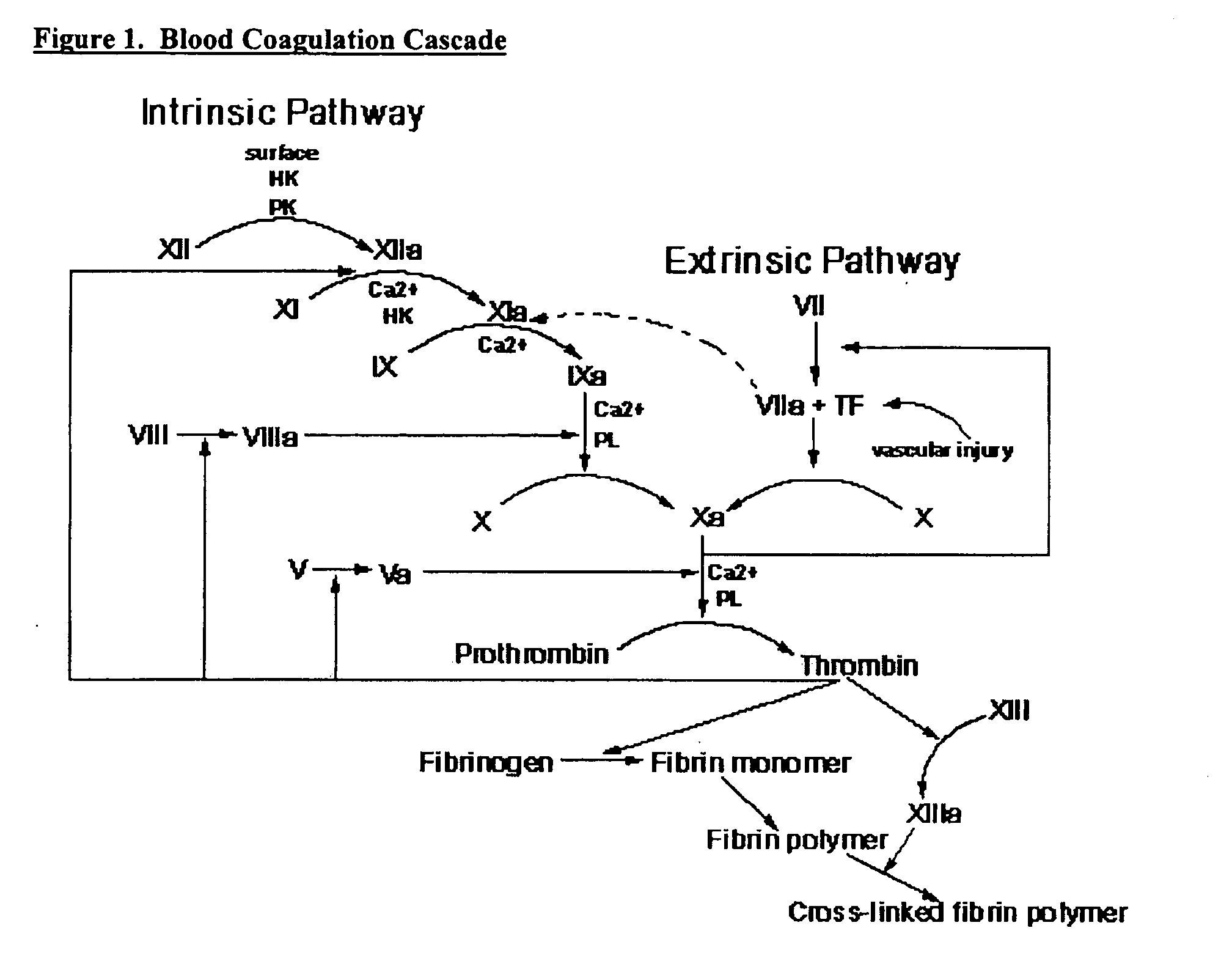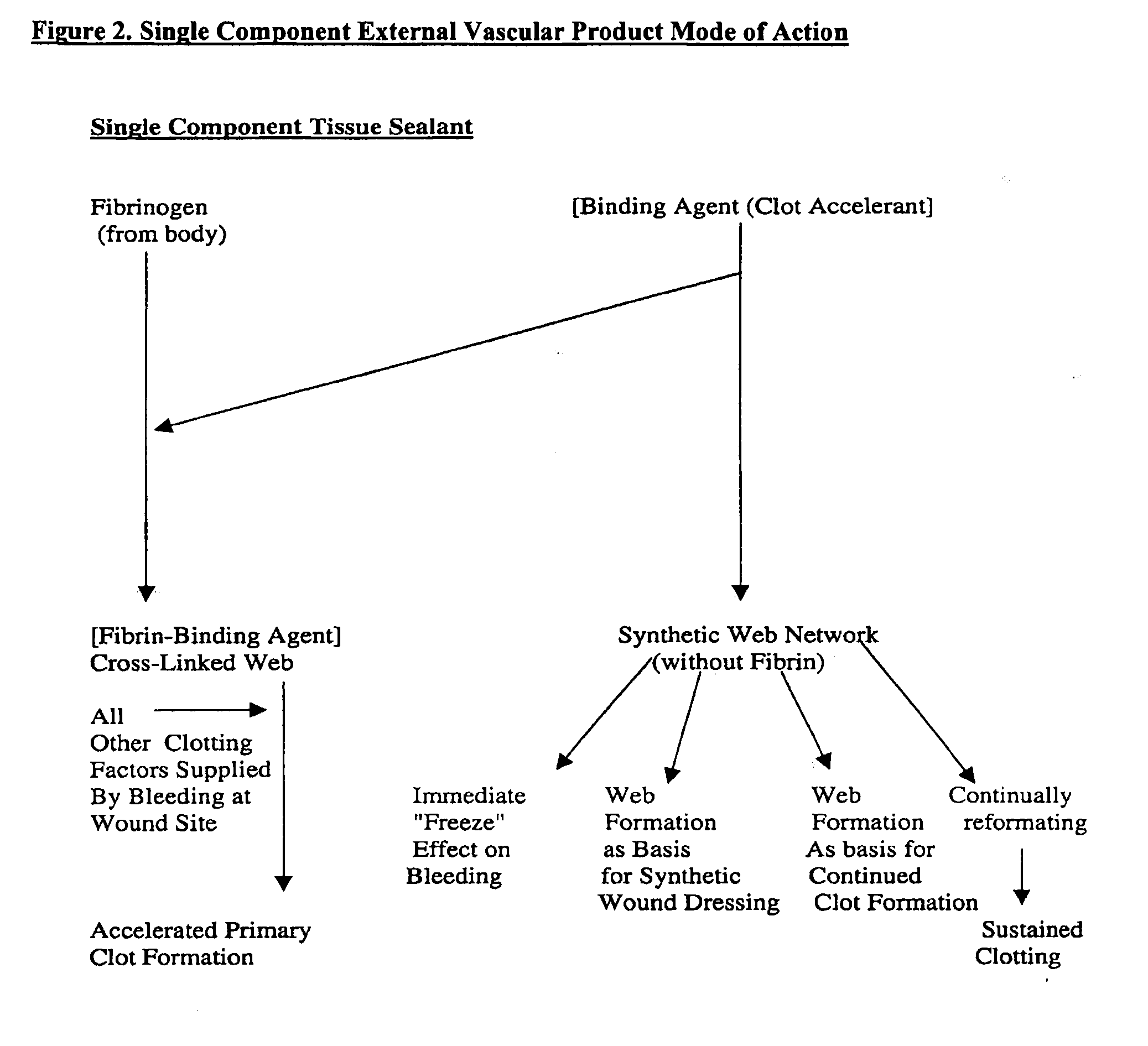Compositions and methods for treating excessive bleeding
a technology of excessive bleeding and composition, applied in the field of wound sealants, can solve the problems of ineffectiveness, failure to present an optimized combination of speed of clotting, and wound sealants, and achieve the effects of minimal special packaging and/or storage conditions, superior cost-effectiveness, and convenient us
- Summary
- Abstract
- Description
- Claims
- Application Information
AI Technical Summary
Benefits of technology
Problems solved by technology
Method used
Image
Examples
example one
[0077]The dry powder formulation for external use as a consumer applied powder for simple vascular bleeding employs two main ingredients. In a suitable mixing container, medical grade aluminum sulfate, Al2(SO4)3 powder (Sigma) is admixed with CAB-O-SIL grade M5 powder (Cabot) to a final concentration of 1.0 percent on a wt / wt basis. It is preferable that mass be determined gravimetrically. It is preferable to compound the materials at <40% RH at ambient room temperature using stainless steel containers on a grounded steel table with antistat mats on the floor to minimize static charge as a result of mixing. Although charge will not adversely effect the product, lack of control may make GMP compounding messy as the silica material is extremely light. Mixing must also be slow wherein aluminum sulfate should be added to silica first and not in the reverse order. Following adequate mixing the material is dispensed into a suitable container for market and sealed...
example two
Liquid Bandage Formulation
[0079]Two phases are provided, one liquid, one solid, which are admixed into a single formulation as a liquid bandage. The preparation is stored as a liquid. Solid component is comprised of reactive fumed silica nanoparticle powder, grade M-5P (Cabot), 0.1-99.9% wt / vol, or equivalent, preferably 20% wt / vol. Solid phase is admixed into liquid phase. Liquid phase is comprised of a non-aqueous evaporative solvent based solution of pyroxylin or other polymeric materials. Pyroxylin is a generic name for cellulose nitrate resin compounds that form a film when dissolved in a mixture of solvents like ether and alcohol. After suitable mixing by stirring the admixture is dispensed into a suitable container (plus lid) for consumer use.
[0080]After application at the wound site, evaporation (quick drying) takes place leaving a thin film on the surface. To facilitate evaporation of product after application solvents include; acetone, ether, amyl acetate (Banana solution)...
example 3
Clotting Study
[0089]To determine the efficacy of the formulation described in Example 1, the following adult volunteer study was conduct. All participants were apparently healthy normal adults with no history of bleeding disorders and not on blood thinning agents. Depending upon the dexterity of the individual either the right or the left forearm or calve was used. A small needleprick was made using a lancet in two duplicate spots and gently expressed to induce uniform minor bleeding at the wound site as would occur upon puncture or alternatively a raspy file was dragged across the skin to abrade it to induce minor bleeding as would occur upon abrasion.
[0090]Immediately after puncture or abrasion, in either case, dry powder (Example 1, without thrombolytic factors) was sprinkled generously onto one of the two cut sites. Care was taken to generate comparably sized cuts. Excess powder was shaken off after 45 seconds and relative clotting time, relative scab tightness and uniformity af...
PUM
| Property | Measurement | Unit |
|---|---|---|
| diameter | aaaaa | aaaaa |
| diameter | aaaaa | aaaaa |
| size | aaaaa | aaaaa |
Abstract
Description
Claims
Application Information
 Login to View More
Login to View More - R&D
- Intellectual Property
- Life Sciences
- Materials
- Tech Scout
- Unparalleled Data Quality
- Higher Quality Content
- 60% Fewer Hallucinations
Browse by: Latest US Patents, China's latest patents, Technical Efficacy Thesaurus, Application Domain, Technology Topic, Popular Technical Reports.
© 2025 PatSnap. All rights reserved.Legal|Privacy policy|Modern Slavery Act Transparency Statement|Sitemap|About US| Contact US: help@patsnap.com



